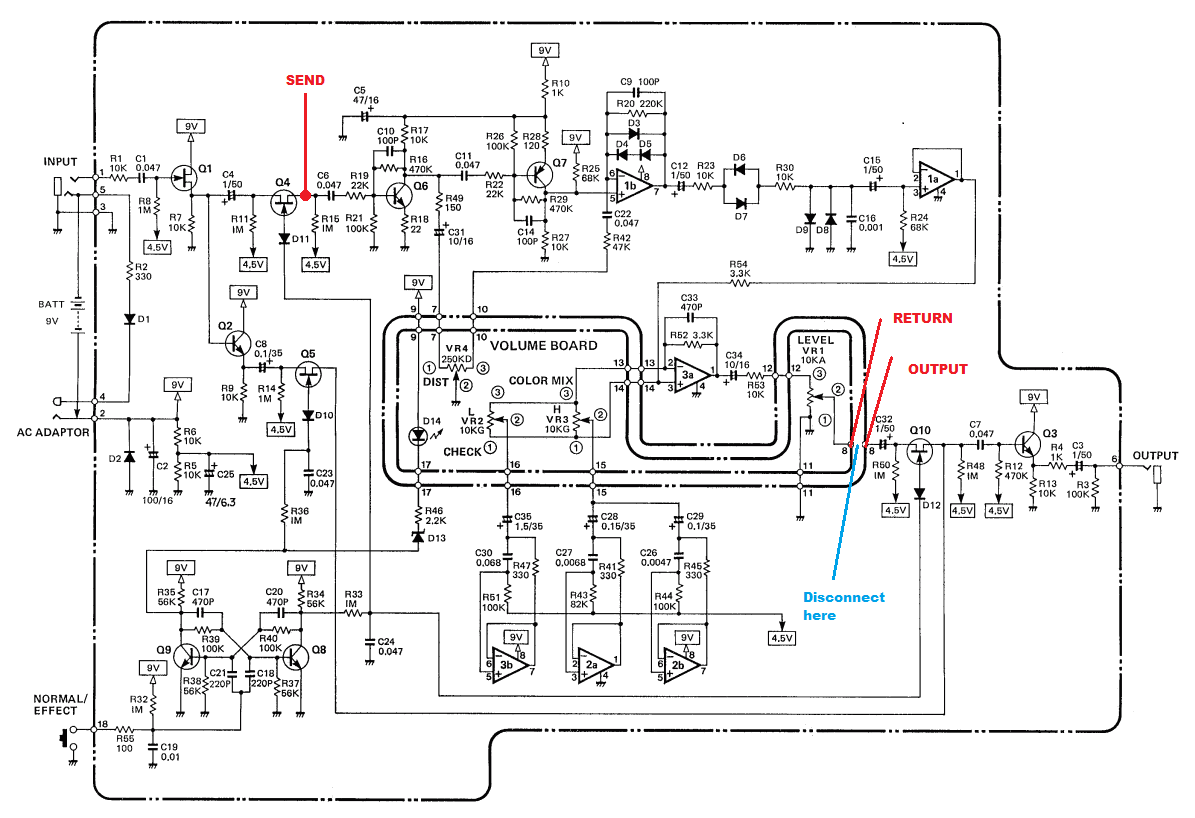@benny_profane
Promethium is wired directly to DC jack and so is the blend board.
Did some more experimenting today and I isolated the clean signal from the blend and sent it directly to the tip of a separate output which was grounded to the pedal jacks, and there was no distortion bleed over so that's good. When I hooked the clean signal back up to lug 1 of a potentiometer with the distortion on lug 3 and output of 3PDT on 2, the bleed was back.
Even when I disconnected the promethium from lug three there was still some bleed which was boggling my mind. However, if I shunted the return from promethium to ground, no more bleed.
I realized that the way I was testing this might have been conflating some of these issues because I was using a breadboard to make some of these connections and I also left some wires hang. I accidentally stumbled upon something cool when I was moving the output tip connection around on my breadboard... It was picking up the signal from the disconnected distortion return when I moved the end of the jumper close to the hanging promethium return wires. I guess I made myself an antenna. I'm thinking something like this must have been going on yesterday when I disconnected the send and return from the promethium and was still picking up some signal.
Gonna probably try the JMK panner or paralyzer soon since shunting the other signal to ground seemed to make this problem disappear in my testing. Honestly, at this point it is really the perfectionist in me because the amount of bleed when the pot is on fully clean isn't horrible and I don't see why I would want to run it fully clean anyway, but that is beside the point.
Promethium is wired directly to DC jack and so is the blend board.
Did some more experimenting today and I isolated the clean signal from the blend and sent it directly to the tip of a separate output which was grounded to the pedal jacks, and there was no distortion bleed over so that's good. When I hooked the clean signal back up to lug 1 of a potentiometer with the distortion on lug 3 and output of 3PDT on 2, the bleed was back.
Even when I disconnected the promethium from lug three there was still some bleed which was boggling my mind. However, if I shunted the return from promethium to ground, no more bleed.
I realized that the way I was testing this might have been conflating some of these issues because I was using a breadboard to make some of these connections and I also left some wires hang. I accidentally stumbled upon something cool when I was moving the output tip connection around on my breadboard... It was picking up the signal from the disconnected distortion return when I moved the end of the jumper close to the hanging promethium return wires. I guess I made myself an antenna. I'm thinking something like this must have been going on yesterday when I disconnected the send and return from the promethium and was still picking up some signal.
Gonna probably try the JMK panner or paralyzer soon since shunting the other signal to ground seemed to make this problem disappear in my testing. Honestly, at this point it is really the perfectionist in me because the amount of bleed when the pot is on fully clean isn't horrible and I don't see why I would want to run it fully clean anyway, but that is beside the point.
Last edited:









